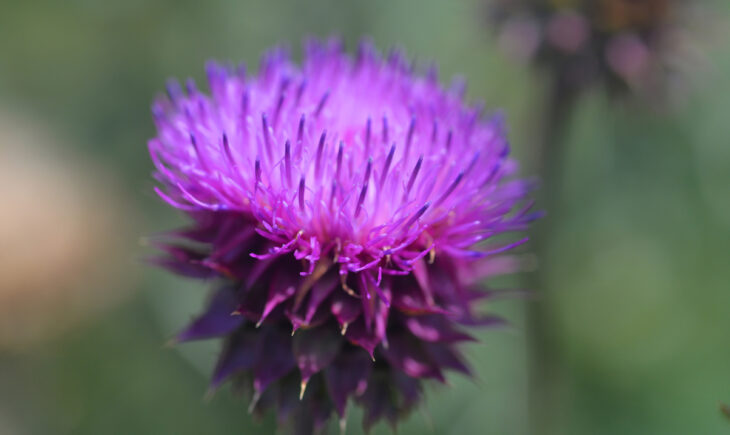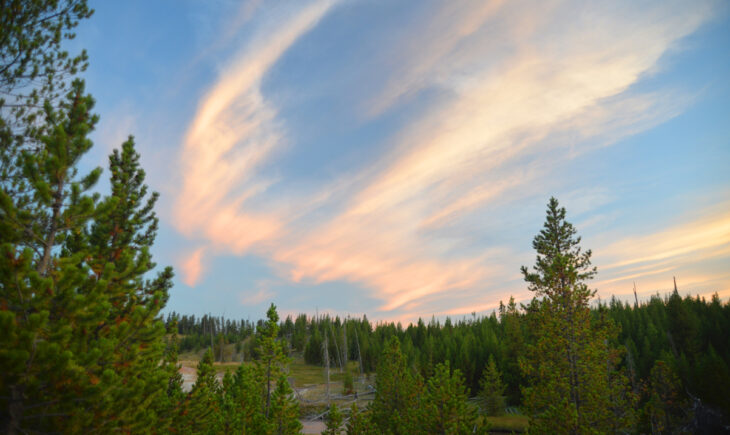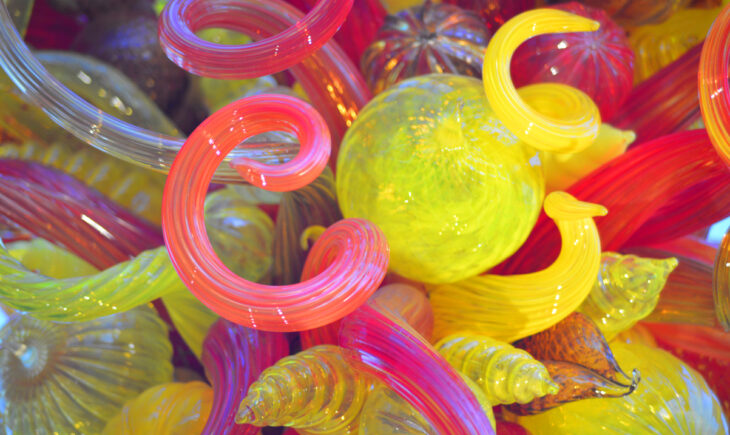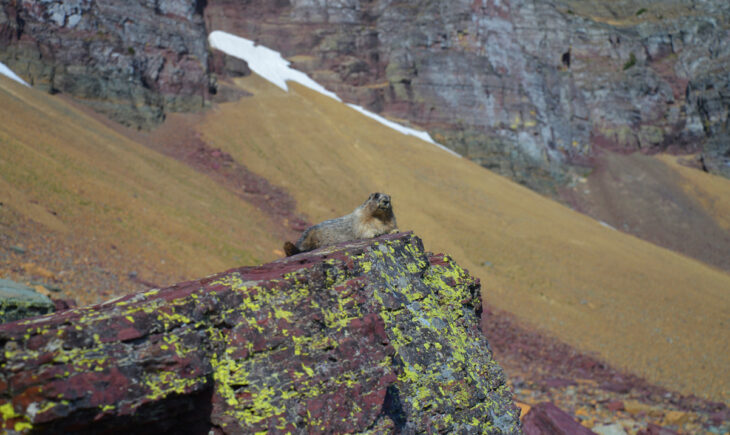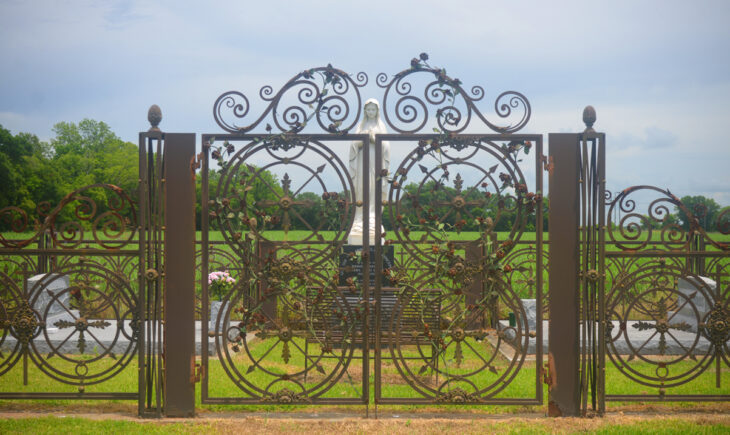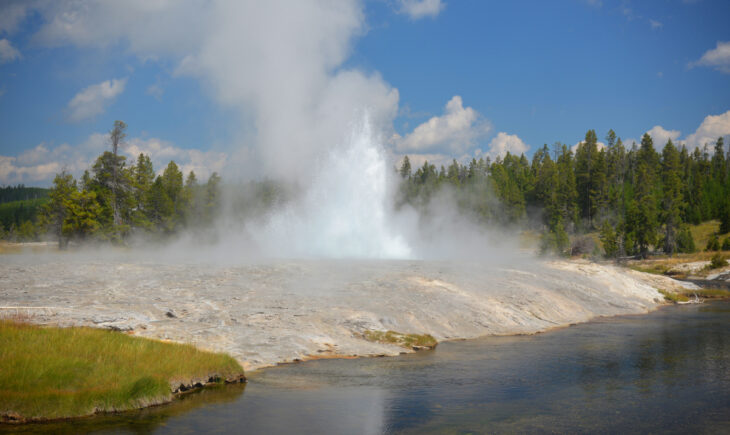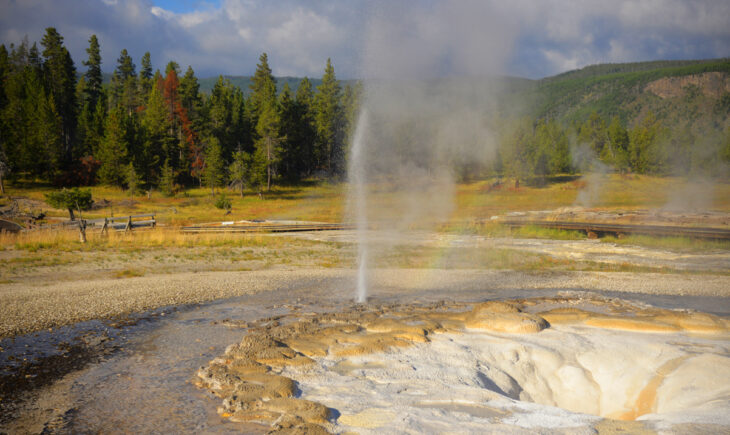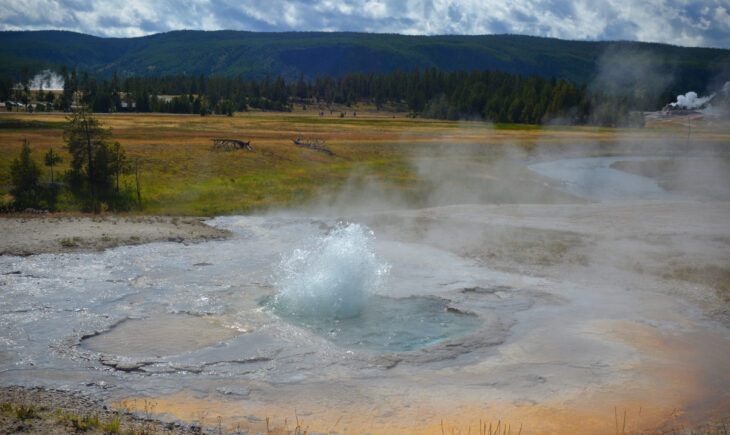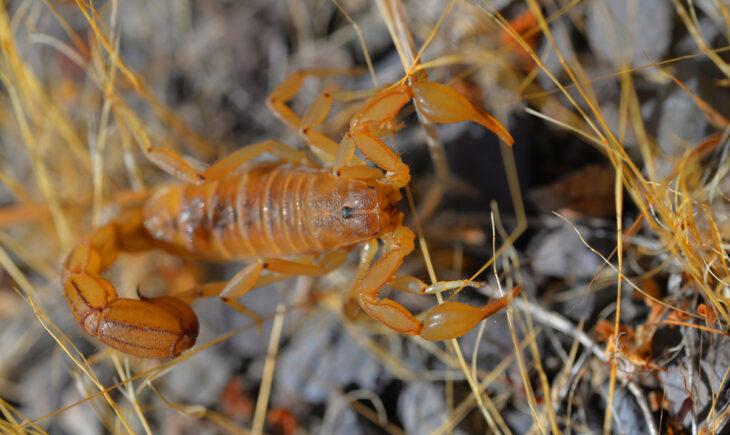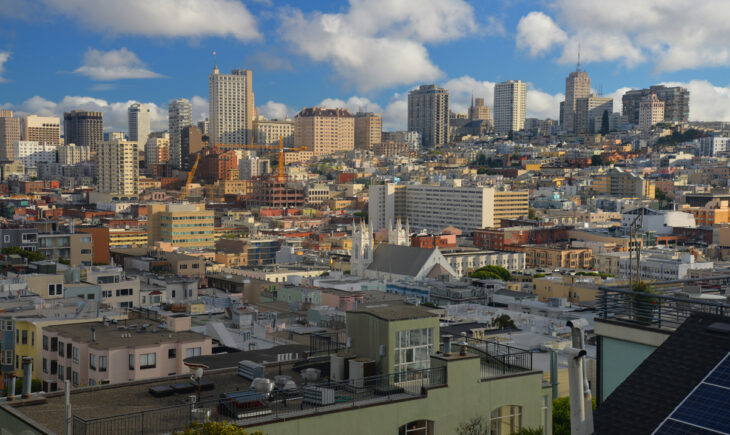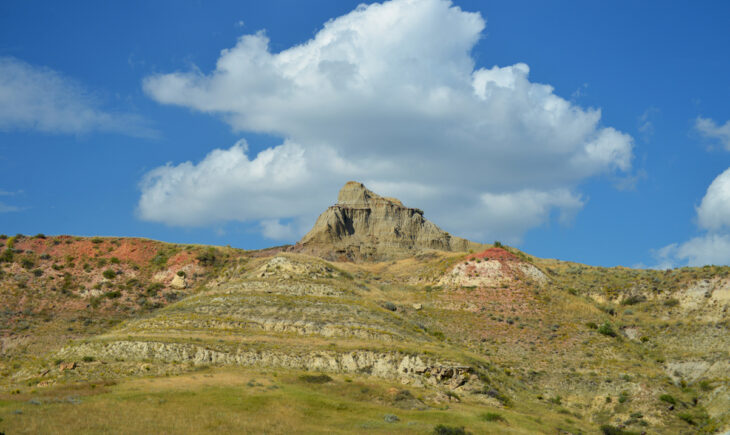The colorful bands of this rock island in Kenai Fjords National Park tell the tale of a cyclic history that has dominated this area for millenia since the last ice age. This last ice age occurred for the extended period between 15,000 and 100,000 years ago. During this period, the average temperature over the entire planet was a chilly 47 degrees Fahrenheit, much cooler than today with its warming atmosphere. The difference in temperature was even more extreme during the ice age in the northern regions, when enormous glaciers carved deep canyons, followed by the great meltdown when many of the deep canyons were submerged back under the rising ocean, forming extremely deep and narrow bays known as fjords, which are located everywhere in Kenai Fjords National Park of Alaska. So this rock island was once a peak that was ground into shape by former glaciers, and then submerged almost to the point of ending up under the water surface. The distant peaks beyond the rock island in the above image are actually several miles away in this enormous wilderness, and the fjord water in between drops to incomprehensible depths. But this is the ocean, so the water surface itself is not always at the same height, but rather varies with the daily tides governed by the moon and the sun. So the bands clearly visible on the rock mark the various levels of the intertidal zonation, the region that exists underwater during high tide, and above water at low tide such as seen in the above image captured by The Wild Images Team during a kayaking trip through the Kenai Fjords National Park. The very bottom brown band represents organisms which flourish underwater but can remain above water for the short periods of low tide, mainly brown seaweed, mussels, barnacles, snails, and starfish. Above that the black band represents organisms that can remain out of water for longer periods of time such as black algae. Above that the green band represents organisms that can remain out of water for even longer periods of time such as green algae Above that the gray band represents organisms that flourish out of water but can remain underwater for the short periods of very high tide, such as lichens. Above that is bare rock due to little access to water, but the rock island itself is topped with mosses, shrubs, and trees. Close inspection will reveal a bald eagle on the rightmost of the tallest trees. The Wild Images Team has captured many other images while in Alaska including the terminal moraines of a glacier winding down from the Chugach Mountains, the many splendid colors of the Sheep Mountain chromatic peaks in the Talkeetna Range, as a seal watches over the thick floating ice in Kenai Fjords National Park, as very fast moving seals cut tracks through the ice, as an entertaining seal strikes a pose on Northwestern Lagoon ice, the many miles of Northwestern Glacier reflecting over the turquoise waters, the awe inspiring rumble when a glacier calves of the cliffs in Kenai Fjords National Park, the moment when clouds crown a peak in Kenai Fjords National Park, the long summer days when fireweed enjoys the land of the midnight sun, and as a very playful Dall’s porpoise breaches the ocean surface in Aialik Bay, each of which are available for sale in our store. Blog posts from Alaska document the moment we realized that no bananas on a boat is a very serious rule, as our kayak carrying water taxi Michael A launches from Miller’s Landing, the chaotic scene during a feeding frenzy floating island of seagulls, the majestic bald eagle scanning the coastline from a tree, the expansive view of a colorfully banded rock island reflection, the chaotic jumble of very noticeable blue ice of Northwest Glacier, the reflective view over briefly calm waters of the far northern Pacific Ocean under the Harding Icefield, when The Wild Images Team was photographed at the mouth of a glacier draining tunnel, the intimidating view from the snout of a very large and very steep glacier, and when our Coordinator Christina Orban keeps tradition by kissing the snout of this glacier. The Wild Images Team has also captured many photos during our journey up to Alaska through western and northern Canada including colorful canoes standing at the edge of Moraine Lake in Banff National Park, a moment of isolation as a canoe crosses Moraine Lake in Banff National Park, the scene when a grizzly mother is grazing with two cubs, a practically newborn grizzly cub is shorter than the grass, near the Rancheria River where a massive blonde grizzly steps out of the brush, where the remote Liard River wanders through woods and mountains, an action shot when two bison calves are learning to spar, and another action shot as a large bull moose runs through the woods, each of which are available for sale in our store. Blog posts from our journey through Canada document the dark background storm clouds while the grain silos shine in the sunlight of Saskatchewan, the sheer terrain of Cascade Mountain towering over the Bow River valley, the velvet covered antlers of an elk as it passes by in Jasper National Park, the welcome sign declaring you are now entering the world famous Alaska Highway, the very iconic mile 0 signpost found at the start of the Alaska Highway, the desolate road of the Alaska Highway drops down into clouds of the Yukon Territory, the very remote road of the Alaska Highway rounds a mountain within clouds of the Yukon Territory, as the Alaska Highway heads straight towards a giant peak along Kluane Lake, the tall snow-capped peaks along the Alaska Highway west of Whitehorse, the shore lining patterned designs of mudflats from the missing A’ay Chu, as The Wild Images Team Photographer Jeremy Robinson hides in the Signpost Forest, and as The Wild Images Team Coordinator Christina hides in the Signpost Forest.
To see more photos, please visit our store


